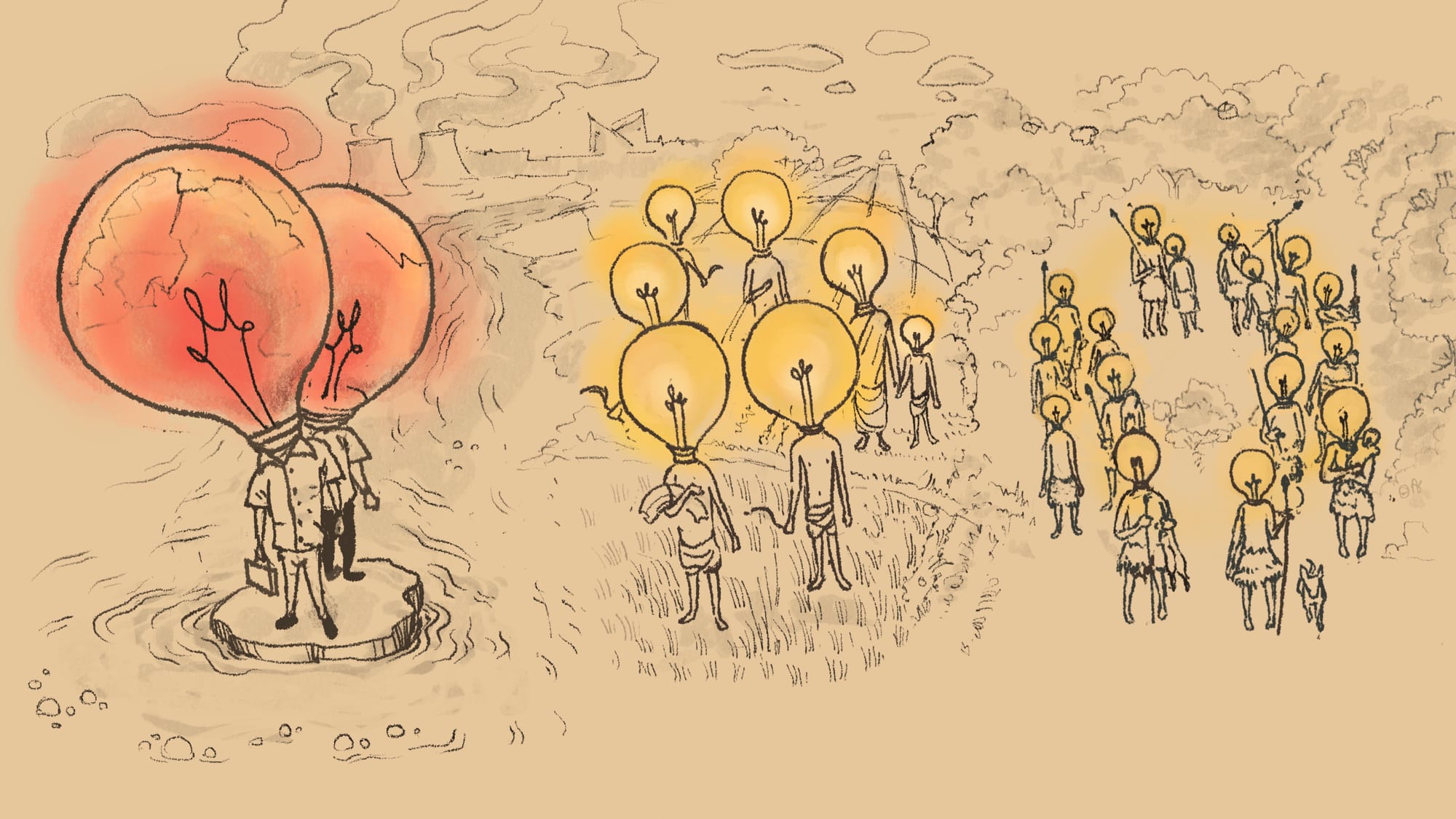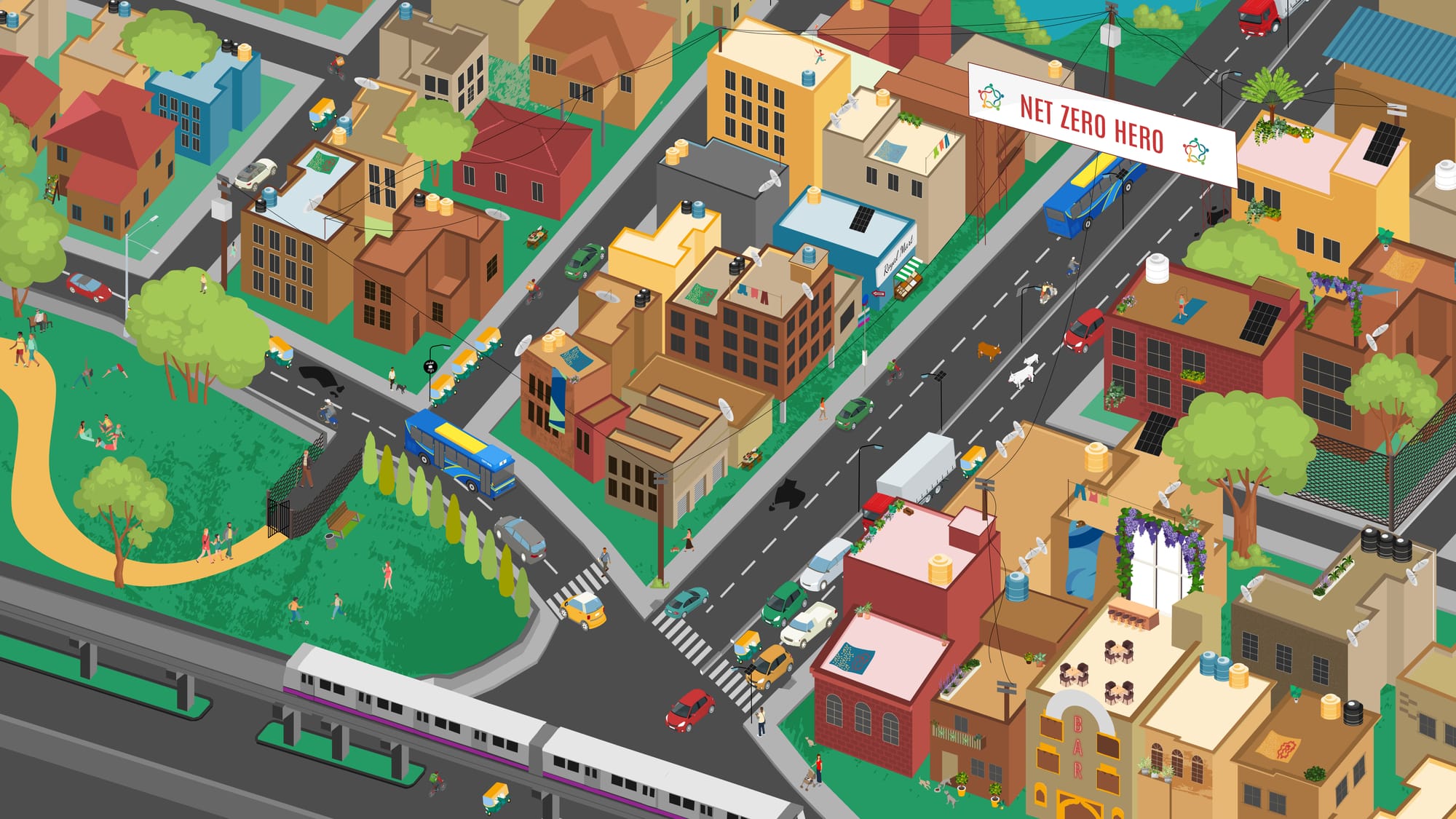Balancing commercial satellite interests and orbital debris catastrophe
Global arms race in satellites increasing the risk of Kessler syndrome in LEO.
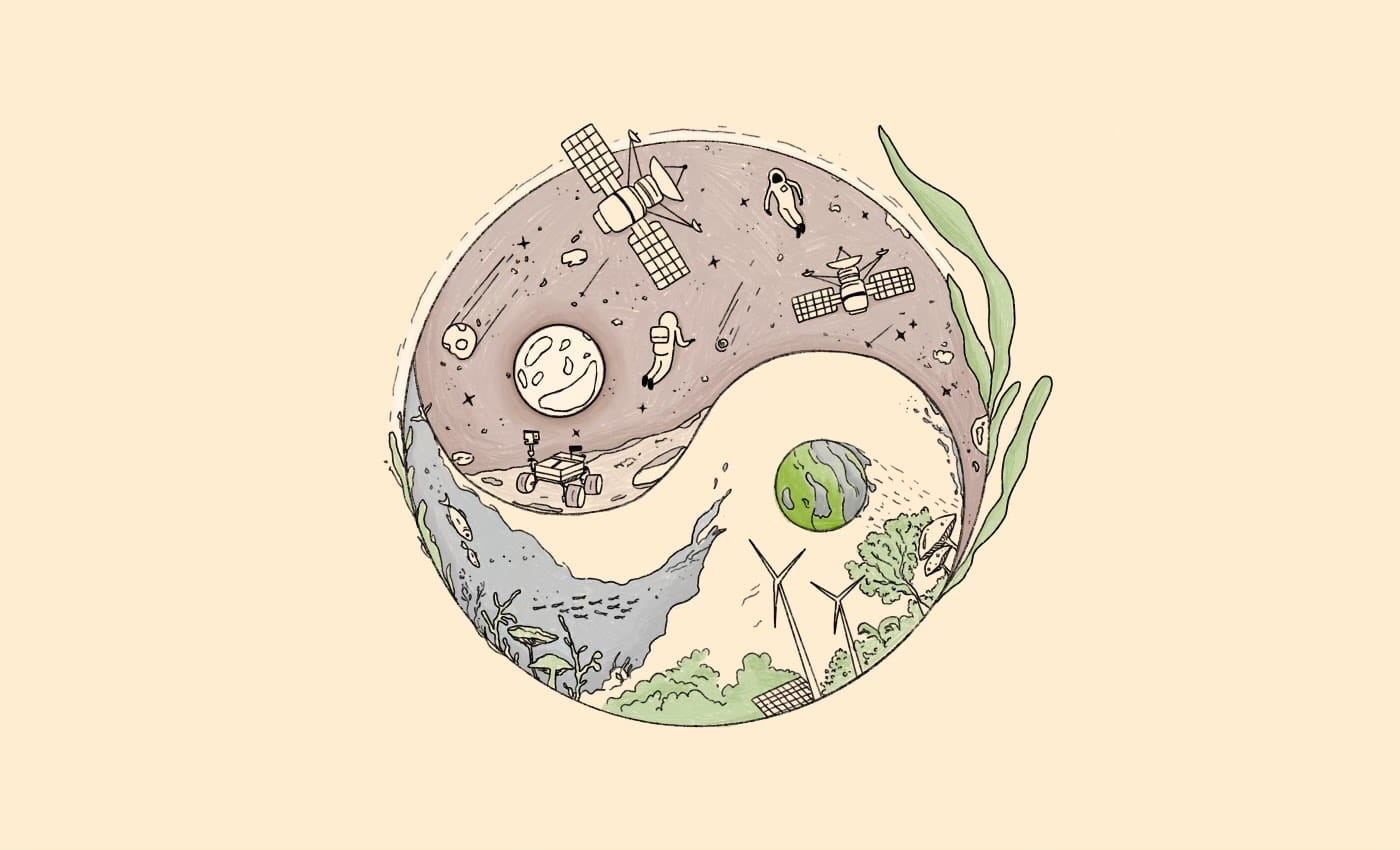
Introduction
Lower Earth orbit (LEO) space is getting increasingly privatized by the satellite constellations from companies such as SpaceX, OneWeb, Amazon, China, and Satellite Group, for commercial internet and surveillance services. This has raised the question of whether the benefits from such satellites outweigh the environmental impact both on space and on Earth. This has subsequently kick-started research in the nascent field of ‘space sustainability.’
Outer space is defined as a ‘global commons,’ as there is no official ownership. This raises the question of who is to be held accountable for regulating the sustainability of space. In this article, we explore the considerations, challenges, and measures to address space sustainability.
In 2018, the United Nations (UN) Committee on the Peaceful Uses of Outer Space (COPUOS) gave a preliminary definition of space sustainability, which was further slightly modified by the Environmental Task Force of Space Scotland. This modified definition sets up an ethical context for space sustainability:
The long-term sustainability of outer space activities (on-ground and in-orbit) is defined as the ability to maintain and improve the conduct of space activities indefinitely into the future in a manner that ensures continued access to the benefits of the exploration and use of space for peaceful purposes in order to meet the needs of the present generations while preserving both the Earth and the outer space environment for future generations.
To act on this definition, a recent research paper by Wilson et al. (2023) proposed analyzing space sustainability under the following three pillars:
- Sustainability from space: using space as a platform to directly or indirectly address global problems.
- Sustainability in space: viewing space as a natural resource for preservation, exploitation, and exploration.
- Sustainability for space: protecting the terrestrial environment from the impacts of space activities.
The rationale behind this classification is that all three criteria must be met to achieve true space sustainability. Currently, no private space company fulfills all three, and no regulations require them to do so. However, as we will see in this article, regulations will soon be essential to prevent breaches of environmental and orbital limits.
The first pillar – sustainability from space – is straightforward. It directs that all space activities should contribute to the Sustainable Development Goals (SDGs) by the UN. Satellite constellations align with SDGs by bridging the digital divide and connectivity for remote and underserved communities. This is mostly achieved by almost all private space companies and space organizations like NASA, ISRO, etc., as their satellites are used for GPS-based navigation, environmental monitoring (weather, crop, and forest carbon management), and for providing internet. All these services contribute directly or indirectly to the SDG goals for all countries.
The second pillar views space as a resource that can be explored and used for the benefit of humanity but not overexploited. It encompasses space safety, orbital environment management, and debris detection and mitigation.
The third pillar addresses the sustainability of the space sector itself by examining its impact on Earth’s environment. This includes the full life cycle of a space mission, from raw material extraction and manufacturing to launch, data processing, and end-of-life disposal. Together, pillars two and three can be seen as an overarching pillar: the sustainability of space, which focuses on managing ecological impacts from space activities on both orbital and terrestrial environments.
This article is the first in a two-part series. Here, we focus on the second pillar, while the next article will explore the third pillar in detail.
Space sustainability paradox
The space sustainability paradox, first described by Wilson et al. (2023), strikes at the heart of the issue. In striving to achieve sustainability from space, the sustainability of space is often compromised. The more the sector develops applications and technologies that contribute to sustainable development goals, the more it risks degrading the orbital environment while escalating resource use and emissions on Earth. For instance, in internet connectivity, LEO satellites produce 6-8 times higher carbon emissions per subscriber (kg CO₂ eq/subscriber) compared to terrestrial broadband, creating a direct conflict between the two pillars.
Another nuance of this paradox is that while space activities can be engineered to support the sustainability of space, they may not necessarily contribute to sustainability from space, for example, satellites dedicated solely to surveillance.
As private space companies race to expand their satellite constellations for commercial interests, the LEO environment is deteriorating due to space debris. Fields such as astronomy are also being affected by increasing light pollution, which disrupts observations from Earth. This light pollution further impacts nocturnal life on Earth. In the orbital environment, debris can push the system past critical tipping points, where crossing a threshold may trigger large and often irreversible changes. To understand this risk more clearly, let’s delve into the issue of space debris.
Issue of Space debris
Currently, LEO hosts over 10,000 satellites, a number expected to exceed 20,000 by 2030 and reach 60,000 in the following decade as private companies accelerate constellation launches. This surge will place significant pressure on an already congested orbital environment. Satellites are, in fact, a minority in orbit; the majority of objects consist of space debris, such as abandoned spacecraft parts and fragments from past explosions and collisions.
In orbit, relative velocities range from ~36,000 to 54,000 km/hr, meaning even tiny pieces of debris can cause severe damage upon impact (similar to how a small bullet inflicts great harm due to its kinetic energy). This creates a constant collision risk for active satellites. As satellite numbers grow, so does the probability of debris accumulation. Beyond a critical threshold, cascading collisions between debris could become self-sustaining, even without new launches. This phenomenon, known as Kessler syndrome, could ultimately render the LEO environment unusable (see Figure 1).
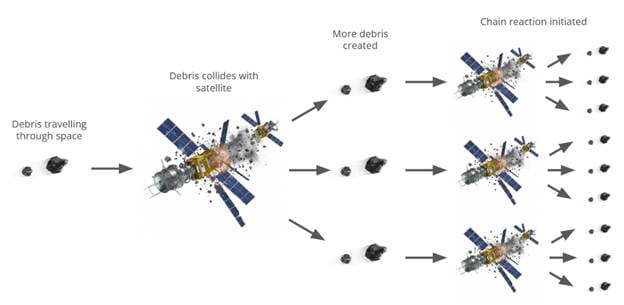
Given the severe risk of Kessler syndrome, it is vital to evaluate both current and projected satellite populations in LEO, assessing how close we are to this tipping point and what mechanisms exist to manage satellite numbers.
Calculating the likelihood of disabling damage to active satellites by debris with sizes >1 cm is a complex problem requiring the modeling of many physical variables. This was investigated in 2020 by JASON, an independent scientific advisory group that provides consulting services to the U.S. government on matters of defense, science, and technology. In the report, they noted that with a target population of 10,000 active satellites, debris accumulation grows slowly, though about 300 disabling collisions could occur over the next 30 years. At 40,000 satellites, however, debris growth becomes dramatic, leading to hundreds of disabling collisions within just a few years. Over time, satellites may be disabled faster than new ones can be launched.
From this analysis, the current LEO environment appears manageable, but by 2030, it could enter a far more unstable state if private satellite growth continues as projected. The dynamics between debris and satellite populations are illustrated in Figure 2. A similar pattern occurs in terrestrial ecosystems, where uncontrolled population growth overshoots carrying capacity, leading to collapse and a diminished ability to sustain life.
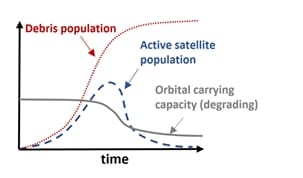
We can only have an optimum number of satellites before they tip over and reach a degraded state due to their interaction with existing debris. Just like ecosystems on Earth can only support a certain amount of activity before they become degraded, Earth’s orbital environment also has a limit to how much satellite traffic it can sustain. This ‘orbital carrying capacity’ hasn’t been formally agreed upon worldwide; hence, regulations in this space (pun intended) are urgently required to maintain a safe operational environment for all active satellites.
It is much less energy-intensive to manage the satellite population than to clean up the debris population over time. Satellite population is managed through two mechanisms—passive and active deorbiting. Passive deorbiting involves relying on natural forces such as atmospheric drag, wherein small satellites are designed to deorbit passively after their missions end, re-enter Earth’s atmosphere, encounter drag, and burn up. Active deorbiting utilizes the satellite’s battery to generate thrust, maneuver it out of orbit, and ensure it re-enters Earth’s atmosphere for drag-induced burning.
In an ideal world, operational equilibrium in LEO could be maintained if the rate of debris production equaled the rate of removal of satellites by passive or active deorbiting. However, due to commercial interests, satellites often remain in orbit long enough to generate debris faster than it can be removed.
It should be noted that we can only remove active satellites under our control to reduce traffic, while we have no control over the creation and dynamics of the debris population. Novel demonstration missions to remove debris are planned; for example, the ELSA-M Space Junk Collector, if successful, would be a breakthrough in space sustainability. In the absence of such debris-removal missions, the most effective way to reduce space traffic is to launch new satellites strategically and responsibly.
Solutions moving forward
Active satellite population management policy becomes crucial in the long run, as depicted in the graph below.
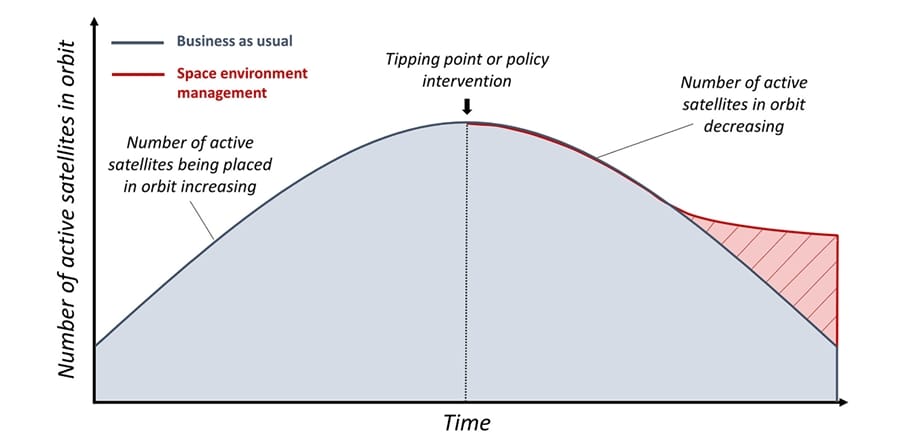
The shaded red part of the graph indicates that intentional orbital environment management will result in maintaining a higher number of active satellites in the long run over the business-as-usual launch of satellites happening currently, as understood from the satellite-debris interaction dynamics studied in the previous section. It becomes important to recognize the addition of new satellites may approach the point of diminishing returns and cause more harm than good.
Regulations need to come in here to limit commercial interests. A 2022 regulation from the Federal Communications Commission, USA, requires satellites to deorbit within 5 years after their mission ends to reduce long-term space pollution. Maintaining a healthy number of active satellites is crucial for climate action on Earth, underlying the relational importance of the two pillars: sustainability in space with sustainability from space.
The development and monitoring of space sustainability metrics will pave the path to its inclusion in international policies and regulations. On that note, like the carbon footprint for terrestrial activities, it is good to introduce a Space Traffic Footprint, which will become a central reference to quantify the strain each artificial space object places on the safety, longevity, and environmental balance of orbital space. Such a measure could guide more responsible satellite deployment and help preserve space for future operations.
In the same vein, the Space Sustainability Rating (SSR), a much-needed initiative developed by a multidisciplinary consortium of space organizations, is being adopted for new satellite launches. SSR uses a composite indicator in which six independent modules, related to space missions, are evaluated to yield a final single score. It provides an incentive for satellite operators to design and implement sustainable mission designs and operations in outer space through:
● a rating system informed by transparent, data-based assessments of the level of sustainability of space missions, without disclosing confidential mission data and proprietary information; and
● practical guidance on how to improve sustainability performance and responsible practices.
Further, scientists are recommending adding ‘Space for All’ as Goal 18 to the existing 17 SDGs and recognizing orbital space depletion as the 10th boundary in the Planetary Boundaries’ framework to catalyze global action in this field.
Conclusion
If the satellite population in LEO is already constrained by orbital limits, then advanced space missions, such as colonizing Mars, are even more likely to confront hard boundaries and prove more unrealistic than they appear today. Ultimately, the vision of space as humanity’s inevitable new frontier, and of a future as a multi-planetary species, is challenged by the physical realities of planetary and orbital limits.
Climate Rubik is a reader supported knowledge platform. We would really appreciate your monetary support (links below) if you enjoyed reading this post and found it insightful.
If you are interested to be a guest writer on this platform, do check out this page.

PS: This article has been edited by Anjaly Raj.
Cover illustration credit: Anjitha KV (Instagram: @abstract_kaleidoscope)


This work is licensed under CC BY-SA 4.0



